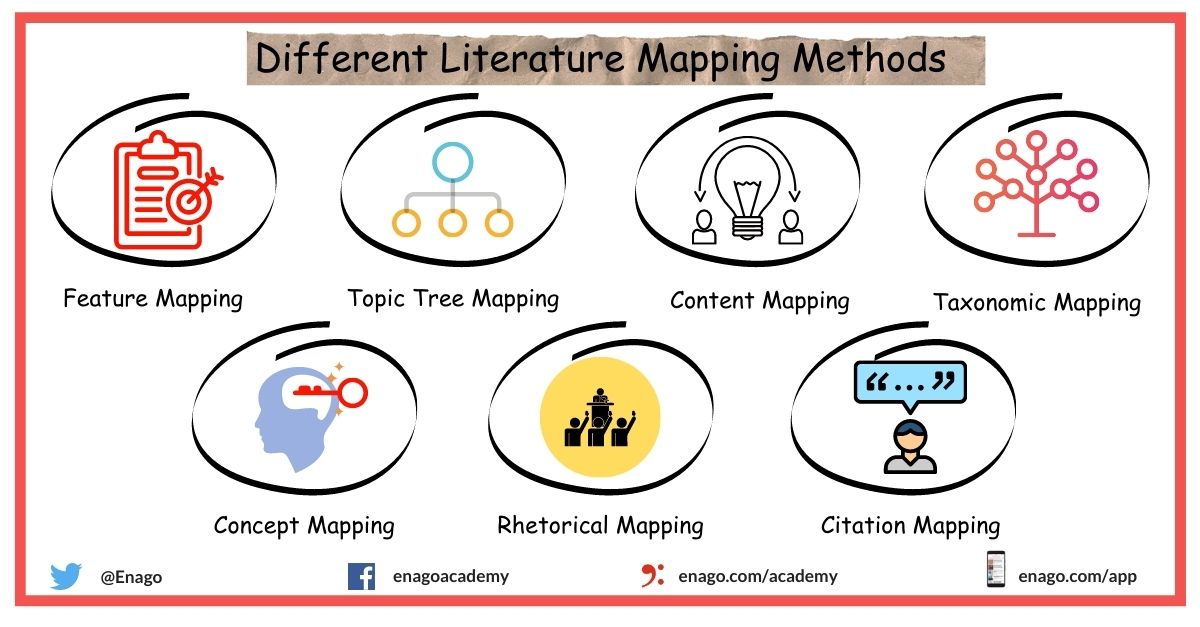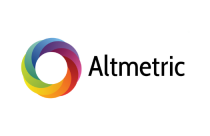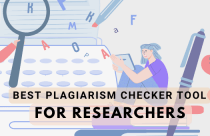How to Master at Literature Mapping: 5 Most Recommended Tools to Use

This article is also available in: Turkish, Spanish, Russian, and Portuguese
After putting in a lot of thought, time, and effort, you’ve finally selected a research topic. As the first step towards conducting a successful and impactful research is completed, what follows it is the gruesome process of literature review. Despite the brainstorming, the struggle of understanding how much literature is enough for your research paper or thesis is very much real. Unlike the old days of flipping through pages for hours in a library, literature has come easy to us due to its availability on the internet through Open Access journals and other publishing platforms. This ubiquity has made it even more difficult to cover only significant data! Nevertheless, an ultimate solution to this problem of conglomerating relevant data is literature mapping.
What is Literature Mapping?
Literature mapping is one of the key strategies when searching literature for your research. Since writing a literature review requires following a systematic method to identify, evaluate, and interpret the work of other researchers, academics, and practitioners from the same research field, creating a literature map proves beneficial. Mapping ideas, arguments, and concepts in a literature is an imperative part of literature review. Additionally, it is stated as an established method for externalizing knowledge and thinking processes. A map of literature is a “graphical plan”, “diagrammatic representation”, or a “geographical metaphor” of the research topic.
Researchers are often overwhelmed by the large amount of information they encounter and have difficulty identifying and organizing information in the context of their research. It is recommended that experts in their fields develop knowledge structures that are richer not only in terms of knowledge, but also in terms of the links between this knowledge. This knowledge linking process is termed as literature mapping.
How Literature Mapping Helps Researchers?
Literature mapping helps researchers in following ways:
- It provides concrete evidence of a student’s understanding and interpretation of the research field to share with both peers and professors.
- Switching to another modality helps researchers form patterns to see what might otherwise be hidden in the research area.
- Furthermore, it helps in identifying gaps in pertinent research.
- Finally, t lets researchers identify potential original areas of study and parameters of their work.
How to Make a Literature Map?
Literature mapping is not only an organizational tool, but also a reflexive tool. Furthermore, it distinguishes between declarative knowledge shown by identifying key concepts, ideas and methods, and procedural knowledge shown through classifying these key concepts and establishing links or relationships between them. The literature review conceptualizes research structures as a “knowledge production domain” that defines a productive and ongoing constructive element. Thus, the approaches emphasize the identity of different scientific institutions from different fields, which can be mapped theoretically, methodologically, or fundamentally.
The two literature mapping approaches are:
- Mapping with key ideas or descriptors: This is developed from keywords in research topics.
- Author mapping: This is also termed as citation matching that identifies key experts in the field and may include the use of citations to interlink them.
Generally, literature maps can be subdivided by categorization processes based on theories, definitions, or chronology, and cross-reference between the two types of mapping. Furthermore, researchers use mind maps as a deductive process, general concept-specific mapping (results in a right triangle), or an inductive process mapping to specific concepts (results in an inverted triangle).
What are Different Literature Mapping Methods?

The different types of literature mapping and representations are as follows:
1. Feature Mapping:
Argument structures developed from summary registration pages.
2. Topic Tree Mapping:
Summary maps showing the development of the topic in sub-themes up to any number of levels.
3. Content Mapping:
Linear structure of organization of content through hierarchical classification.
4. Taxonomic Mapping:
Classification through standardized taxonomies.
5. Concept Mapping:
Linking concepts and processes allows procedural knowledge from declarative information. With a basic principle of cause and effect and problem solving, concept maps can show the relationship between theory and practice.
6. Rhetorical Mapping:
The use of rhetoric communication to discuss, influence, or persuade is particularly important in social policy and political science and can be considered a linking strategy. A number of rhetorical tools have been identified that can be used to present a case, including ethos, metaphor, trope, and irony.
7. Citation Mapping:
Citation mapping or matching is a research process established to specifically establish links between authors by citing their articles. Traditional manual citation indexes have been replaced by automated databases that allow visual mapping methods (e.g. ISI Web of Science). In conclusion, citation matching in a subject area can be effective in determining the frequency of authors and specific articles.
5 Most Useful Literature Mapping Tools
Technology has made the literature mapping process easier now. However, with numerous options available online, it does get difficult for researchers to select one tool that is efficient. These tools are built behind explicit metadata and citations when coupled with some new machine learning techniques. Here are the most recommended literature mapping tools to choose from:
1. Connected Papers
a. Connected Papers is a simple, yet powerful, one-stop visualization tool that uses a single starter article.
b. It is easy to use tool that quickly identifies similar papers with just one “Seed paper” (a relevant paper).
c. Furthermore, it helps to detect seminal papers as well as review papers.
d. It creates a similarity graph not a citation graph and connecting lines (based on the similarity metric).
e. Does not necessarily show direct citation relationships.
f. The identified papers can then be exported into most reference managers like Zotero, EndNote, Mendeley, etc.
2. Inciteful
a. Inciteful is a customizable tool that can be used with multiple starter articles in an iterative process.
b. Results from multiple seed papers can be imported in a batch with a BibTex file.
c. Inciteful produces the following lists of papers by default:
- Similar papers (uses Adamic/Adar index)
- “Most Important Papers in the Graph” (based on PageRank)
- Recent Papers by the Top 100 Authors
- The Most Important Recent Papers
d. It allows filtration of results by keywords.
e. Importantly, seed papers can also be directly added by title or DOI.
3. Litmaps
a. Litmaps follows an iterative process and creates visualizations for found papers.
b. It allows importing of papers using BibTex format which can be exported from most reference managers like Zotero, EndNote, Mendeley. In addition, it allows paper imports from an ORCID profile.
c. Keywords search method is used to find Litmaps indexed papers.
d. Additionally, it allows setting up email updates of “emergent literature”.
e. Its unique feature that allows overlay of different maps helps to look for overlaps of papers.
f. Lastly, its explore function allows finding related papers to add to the map.
4. Citation-based Sites
a. CoCites is a citation-based method for researching scientific literature.
b. Citation Gecko is a tool for visualizing links between articles.
c. VOSviewer is a software tool for creating and visualizing bibliometric networks. These networks are for example journals, may include researchers or individual publications, which can be generated based on citation, bibliographic matching, co-citation, or co-authorship relationships. VOSviewer also offers text mining functionality that can be used to create and visualize networks of important terms extracted from a scientific literature.
5. Citation Context Tools
a. Scite allow users to see how a publication has been cited by providing the context of the citation and a classification describing whether it provides supporting or contrasting evidence for the cited claim.
b. Semantic Scholar is a freely available, AI-powered research tool for scientific literature.
Have you ever mapped your literature? Did you use any of these tools before? Lastly, what are the strategies and methods you use for literature mapping? Let us know how this article helped you in creating a hassle-free and comprehensive literature map.











It’s very good and detailed.
It’s very good and clearly . It teaches me how to write literature mapping.